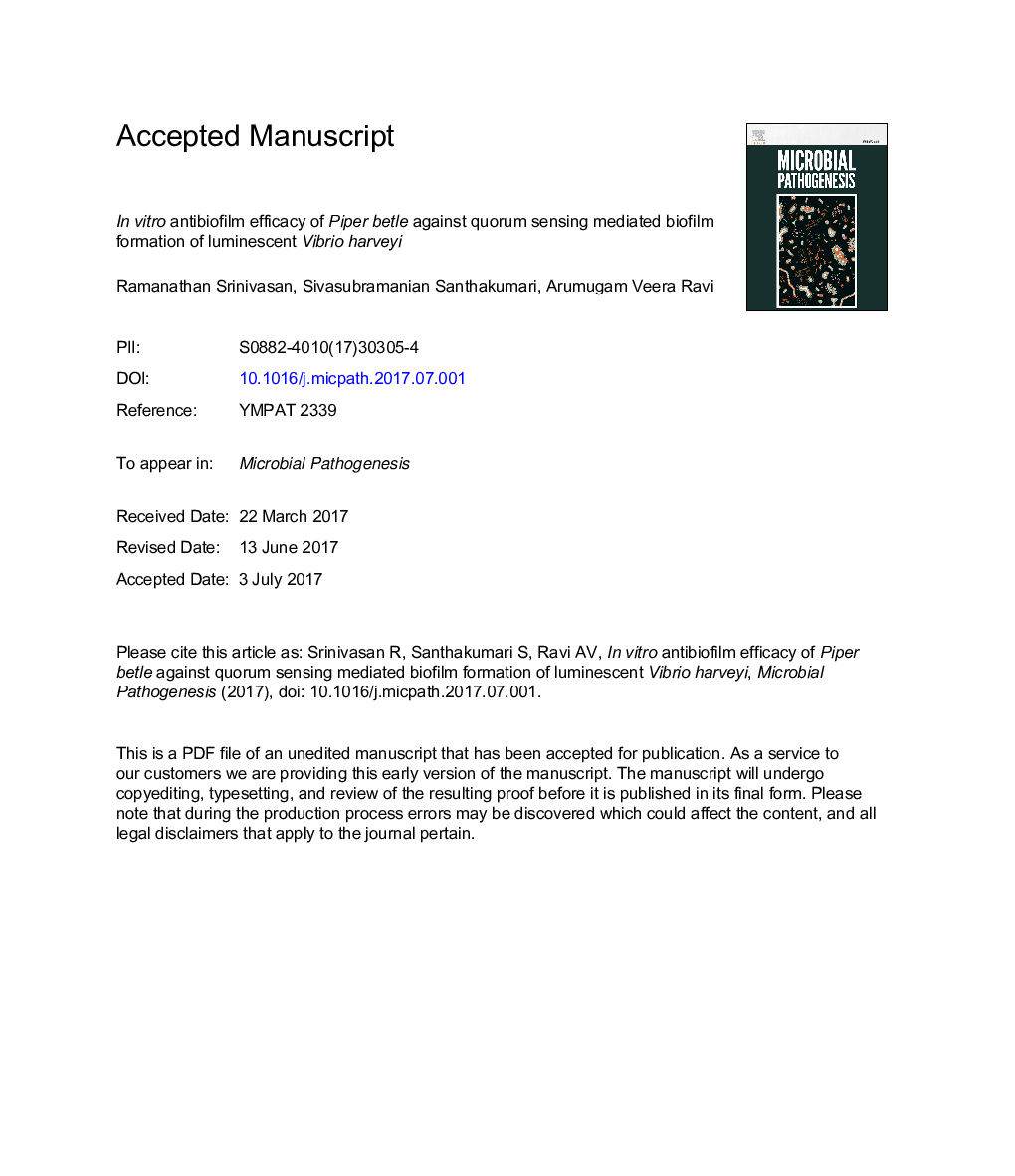| Article ID | Journal | Published Year | Pages | File Type |
|---|---|---|---|---|
| 5673667 | Microbial Pathogenesis | 2017 | 24 Pages |
Abstract
Vibrio harveyi is a potent biofilm former, which confers resistance to multiple antimicrobials, disinfectants, chemicals and biocides. The prevalence of biofilm mediated antibiotic resistance among aquatic bacterial pathogens stresses the search for novel alternative approach to treat vibriosis in aquaculture. Exploring suitable therapeutics from natural resources could be a novel area of research. Therefore, this work was executed to evaluate the inhibitory effect of Piper betle ethyl acetate extract (PBE) on bioluminescence production and biofilm formation of V. harveyi. Minimal inhibitory concentration (MIC) of PBE against planktonic V. harveyi was found to be 1600 μg mlâ1; furthermore, PBE inhibited the quorum sensing (QS) mediated bioluminescence production and biofilm formation in V. harveyi upto 98 and 74% respectively, at its sub-MIC concentration of 400 μg mlâ1 without affecting their cell viability. Similar results were obtained for exopolysaccharides production and swimming motility related to biofilm formation of V. harveyi, where PBE reduced EPS production upto 64%. Light and confocal laser scanning microscopic analyses further confirmed that the PBE effectively prevented the initial attachment as well as microcolonies formation of V. harveyi biofilm, when compared to their untreated controls. This study demonstrates the promising antibiofilm activity of PBE and confirms the ethnopharmacological potential of this plant against V. harveyi infections.
Related Topics
Life Sciences
Immunology and Microbiology
Microbiology
Authors
Ramanathan Srinivasan, Sivasubramanian Santhakumari, Arumugam Veera Ravi,
